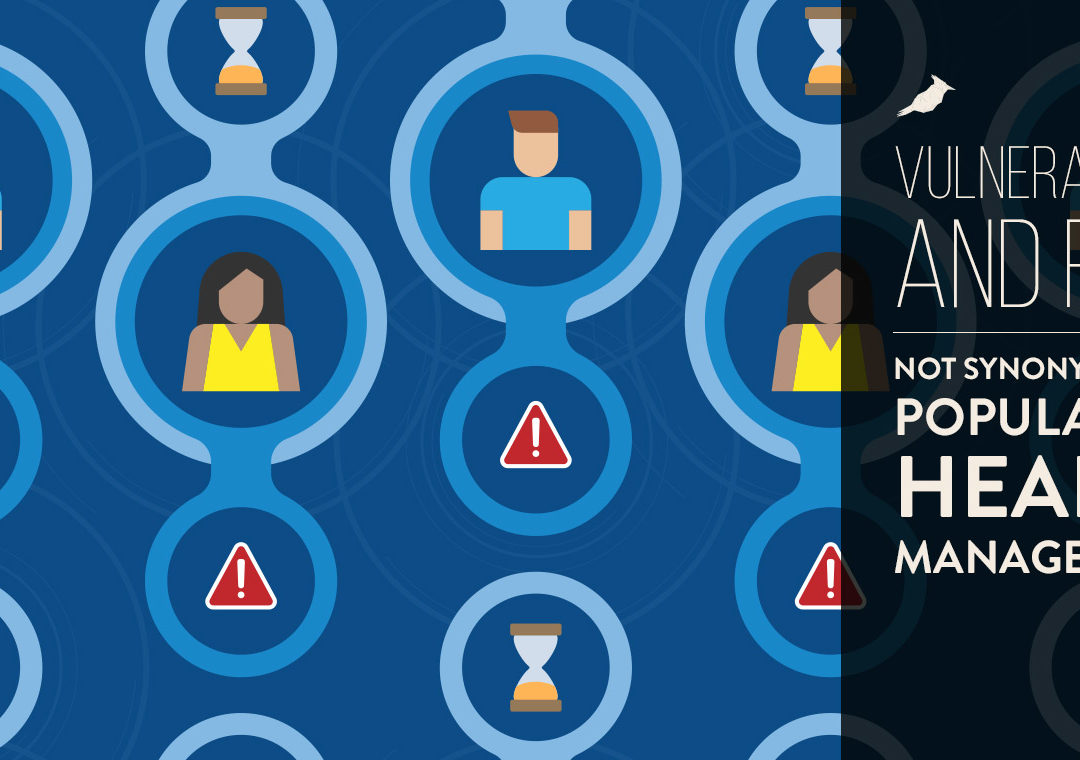The term “vulnerable” keeps popping up in the context of population health management. More and more, I am seeing marketing around solutions that identify vulnerable populations and how they are using these factors to manage patients more effectively
Through some research though, what I’m finding is that the term “vulnerable” is being used synonymously with “high risk”, without any real change to the models. This is misleading and it has the potential to cause issues; especially under a population health management model, where risk is such a determining factor in both care delivery and reimbursement.
Vulnerability vs. Risk
In today’s landscape, when we refer to “high risk” or “at risk” populations we generally mean those individuals that have some combination of tough chronic diseases. Most risk models out there look at basic demographics (age, sex, location), chronic conditions (COPD, Asthma, CHF, etc.), and prescription usage. In some more advanced solutions, like the Johns’ Hopkins ACG or Milliman’s MARA software, we see lab markers, frailty, and ED utilization being factored in. In general though, this is still very much clinically based.
While underlying health conditions are a significant factor for outcomes, there are many other things that contribute to these statistics. These factors are vulnerabilities and are not isolated to clinical conditions. This includes complex and overlapping socio-psychological factors, such as socioeconomic status (SES), physical environment, employment and job security, housing conditions, transportation challenges, inadequate education, lack of social support or networks, barriers to healthy foods, access to affordable healthcare, being from a racial and ethnic minority, divorce, retirement, religious beliefs, etc. These are systemic barriers that may result in poor outcomes despite having the highest quality evidence-based medicine available. This is what “vulnerable” means.
The Impact
One of the major objectives under pop health management is to identify those high risk/high utilizers and direct resources to better manage their care. The ability to effectively do this has a huge impact on a physician’s performance profile, their reimbursement, and ultimately their level of engagement.
Below are just a few examples of how Risk is used throughout pop health management today
- Categorizing individuals into “risk bands”; i.e., stratification
- Allocating resources around care coordination, outreach, and education.
- Determining financial benchmarks, like per member per month or case rate amounts;
- Establishing payment penalties placed on providers that don’t meet financial targets;
- Implementing standards for quality measures such as readmissions, ED utilization, and mortality rates.
Given the implications that risk has on performance and benchmarks, its not surprising that many providers are concerned about risk modeling and want to make sure it accounts for these vulnerabilities, not just the burden of illness. It’s important to move in that direction, as this is the future of pop health management; it’s equally important to understand the challenges in calculating risk based on vulnerabilities and the implications for claiming these capabilities.

